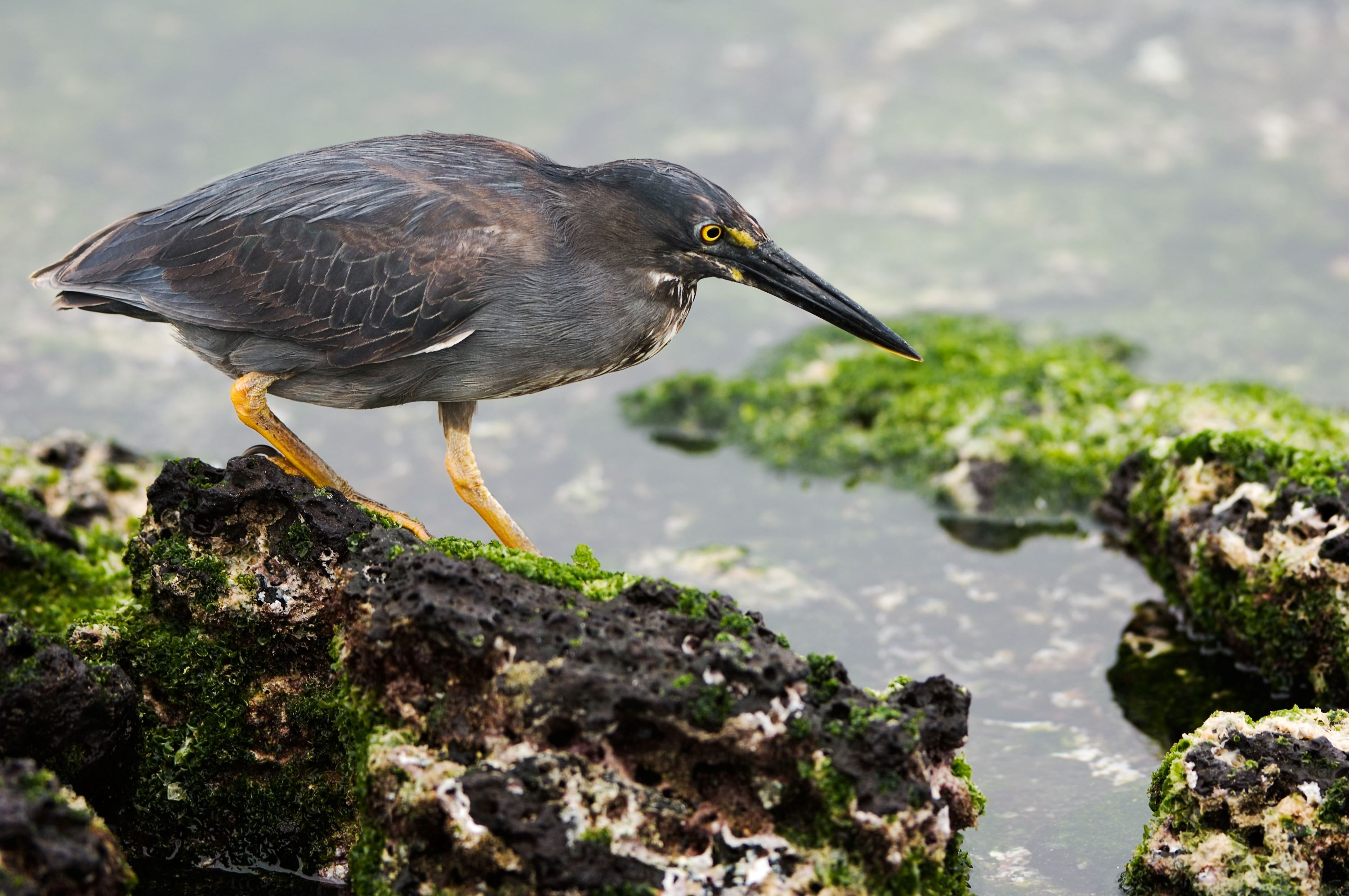
Lava Heron: The Unique Avian of the Galápagos
Introduction to the Lava Heron
The Lava Heron, Butorides sundevalli, is a fascinating bird species endemic to the Galápagos Islands. Known for its distinctive coloration and adaptation to volcanic landscapes, this heron is a remarkable example of evolution in isolated environments.
Physical Description
The Lava Heron is a small heron, measuring about 35 cm in length. It exhibits a unique grayish-black plumage that blends seamlessly with the lava rocks of its habitat. During the breeding season, adults may develop a slightly brighter coloration with blue-gray tones. The bird’s legs are orange to yellow, and the beak is black, features that help it blend into the volcanic environment.
Habitat and Distribution
As an endemic species, the Lava Heron is found exclusively in the Galápagos Islands. It inhabits coastal areas, mangroves, and tidal pools, where it can be seen perching on lava rocks. Its habitat choice is closely linked to the availability of food and nesting sites.
Behavior and Lifestyle
The Lava Heron is known for its solitary nature and is often seen alone or in pairs. It has adapted well to its unique environment, utilizing the rocky shores and tidal pools for hunting.
Feeding Habits
Its diet consists mainly of small fish, crabs, and other marine invertebrates. The Lava Heron uses a patient hunting strategy, standing motionless or stalking slowly before striking its prey swiftly.
Breeding and Nesting Habits
The Lava Heron breeds throughout the year, with a peak in activity coinciding with the warmer season. It nests in mangroves or low shrubs, often close to the water. The nests are simple platforms constructed from twigs and branches.
Egg Laying and Incubation
Typically, the female lays 1 to 2 pale blue eggs. Both parents share the responsibility of incubating the eggs, which hatch after about 21 to 25 days. The isolated nesting sites help protect the eggs from predators.
Chick Rearing and Parental Care
The chicks are altricial and require significant parental care. Both parents feed the chicks, primarily with regurgitated fish. The young fledge the nest at about 5 to 6 weeks old.
Vocalizations and Communication
The Lava Heron is relatively quiet, but it does produce a range of sounds for communication, especially during the breeding season. These include croaks and soft calls used for signaling alarm and communicating with mates and chicks.
Conservation Status
The Lava Heron is classified as Vulnerable due to its limited range and the specific environmental conditions required for its survival. Its population is susceptible to changes in its habitat, particularly due to invasive species and climate change.
Similar Species and Taxonomy
Part of the order Pelecaniformes, family Ardeidae, the Lava Heron is closely related to other herons in the genus Butorides, such as the Striated Heron. However, it is distinguished by its unique plumage and its adaptation to the volcanic environment of the Galápagos.
The Lava Heron in Utah
The Lava Heron is not found in Utah or on the mainland, as it is restricted to the Galápagos Islands. In Utah, birdwatchers can observe other heron species in local wetlands.
Conclusion
The Lava Heron, Butorides sundevalli, is an extraordinary bird that exemplifies the unique biodiversity of the Galápagos Islands. Its specialized adaptations to the volcanic landscapes of the archipelago highlight the fascinating process of evolution and the importance of conserving unique ecosystems. The Lava Heron not only adds to the allure of the Galápagos but also serves as an important indicator of the health of these fragile island environments.